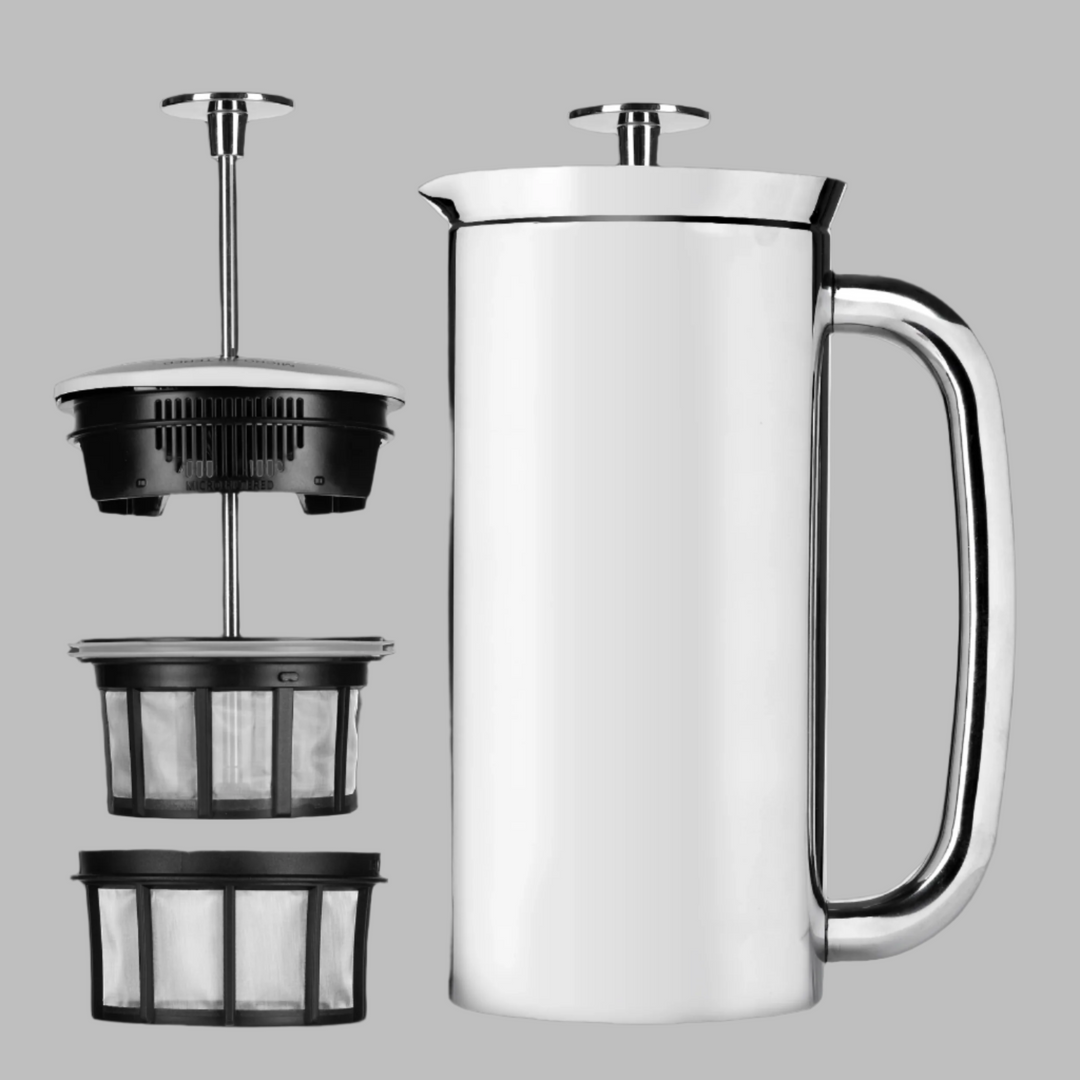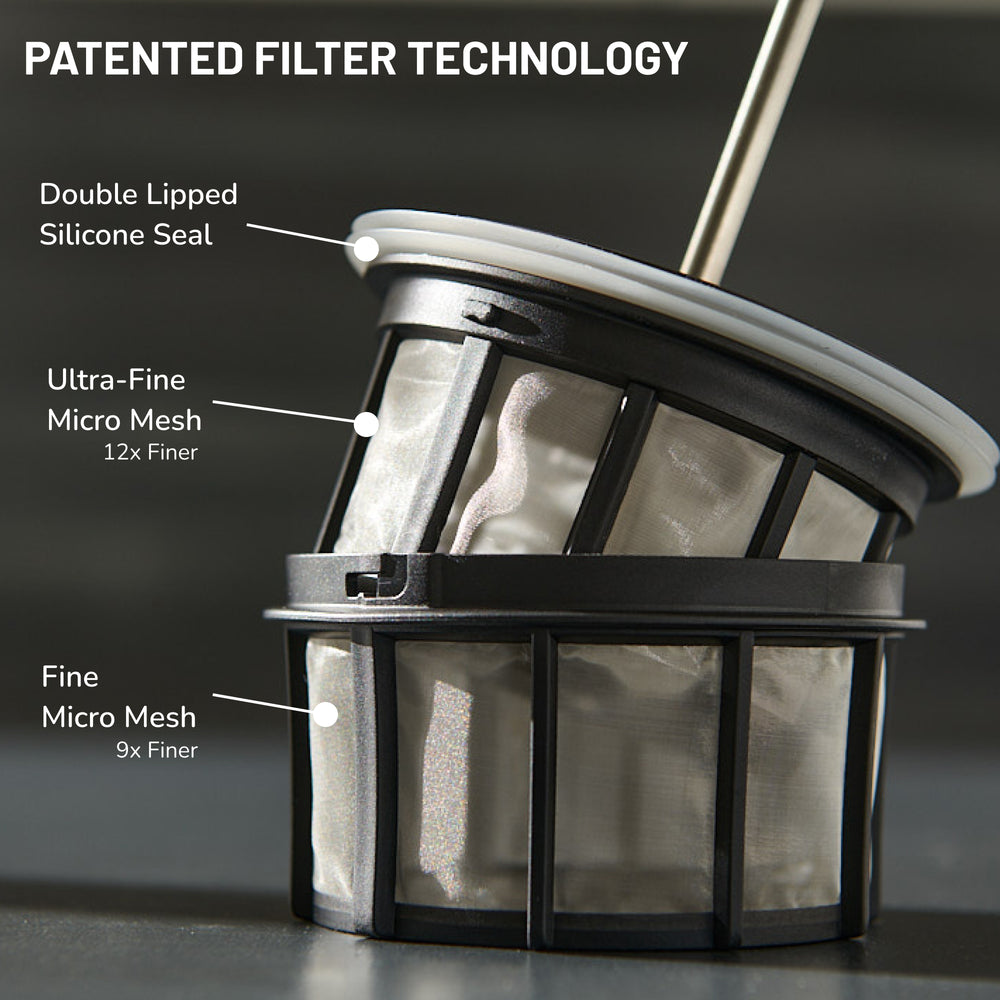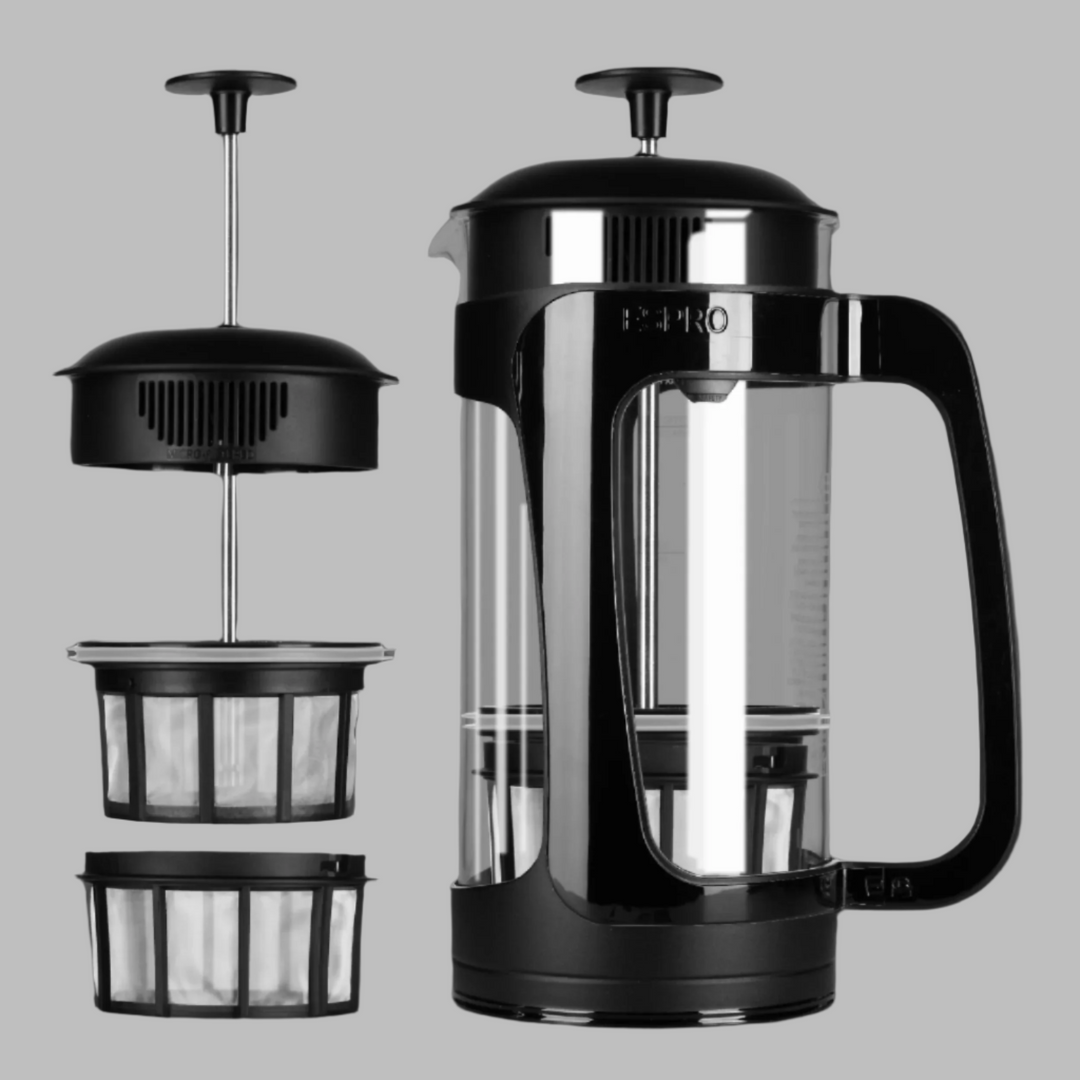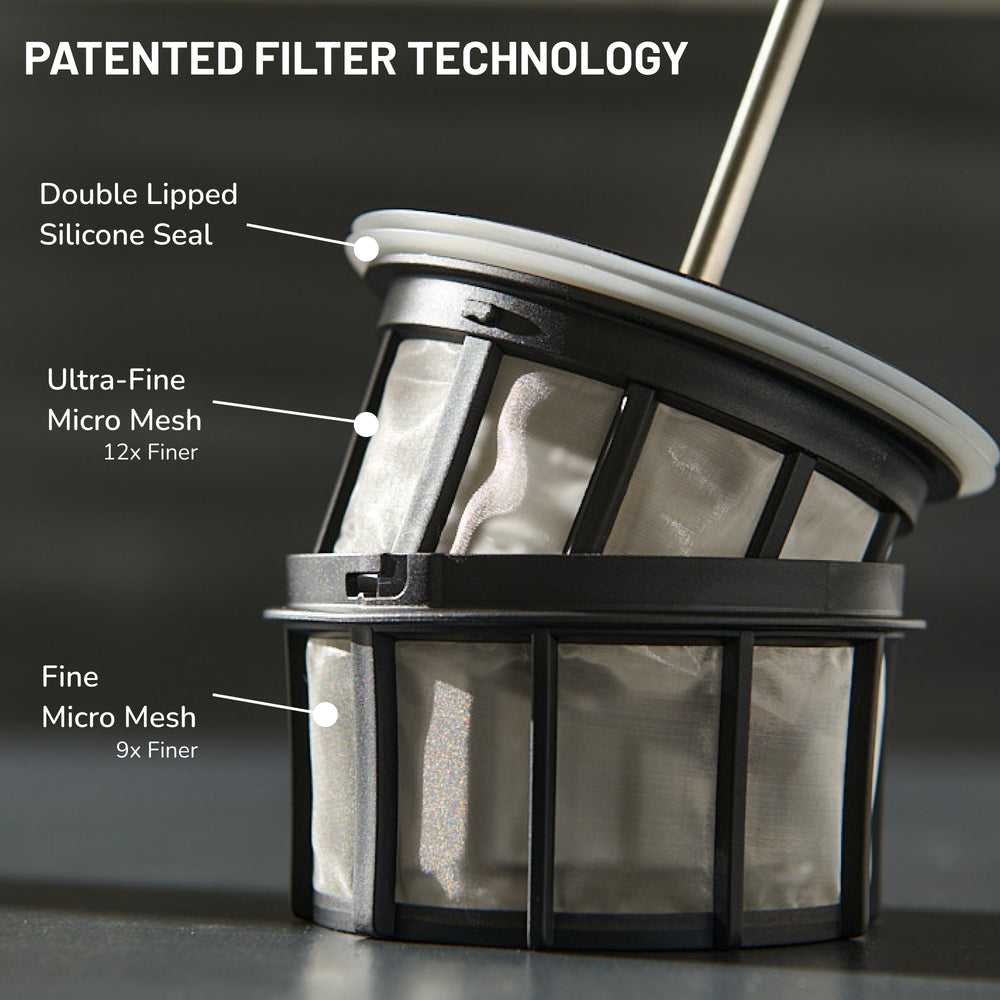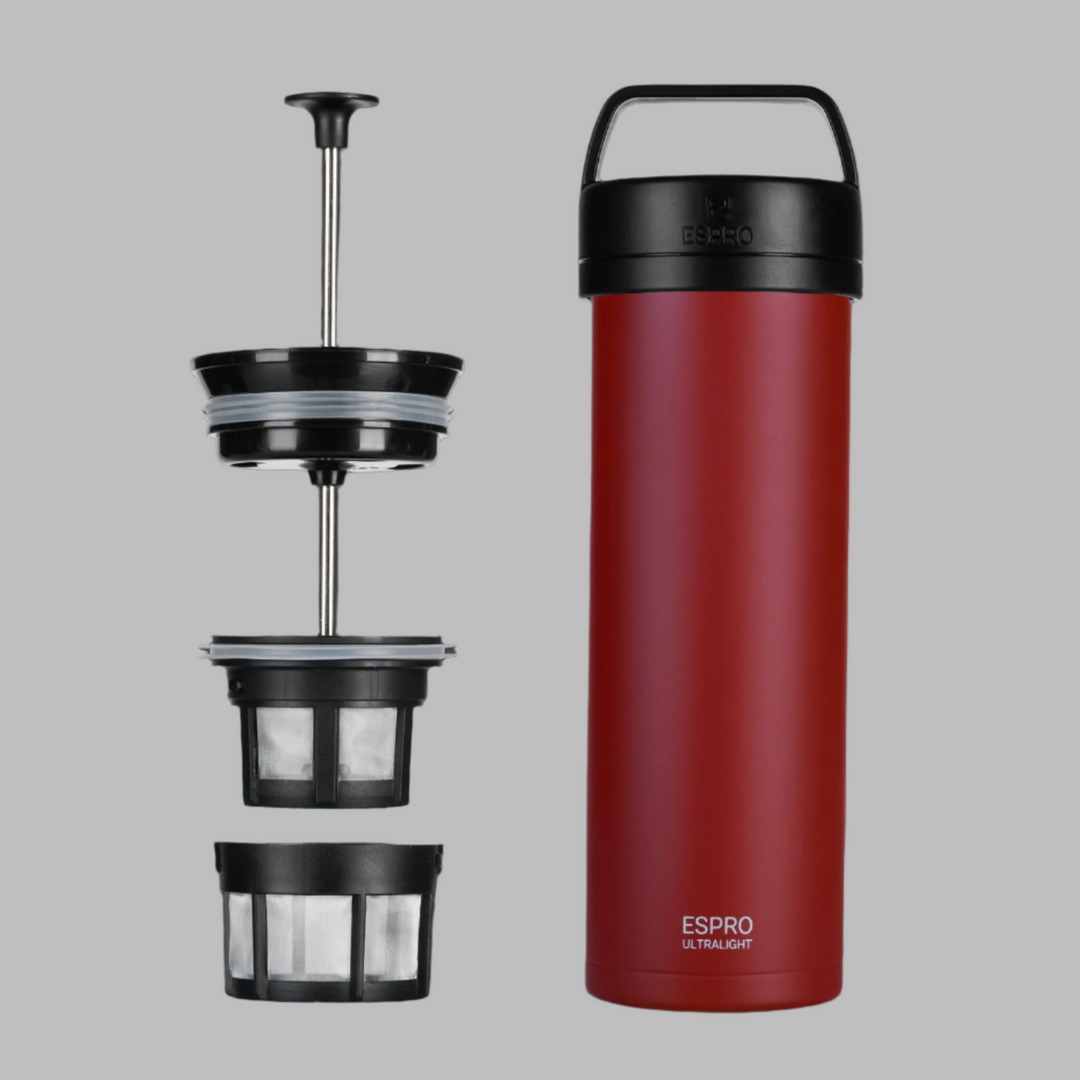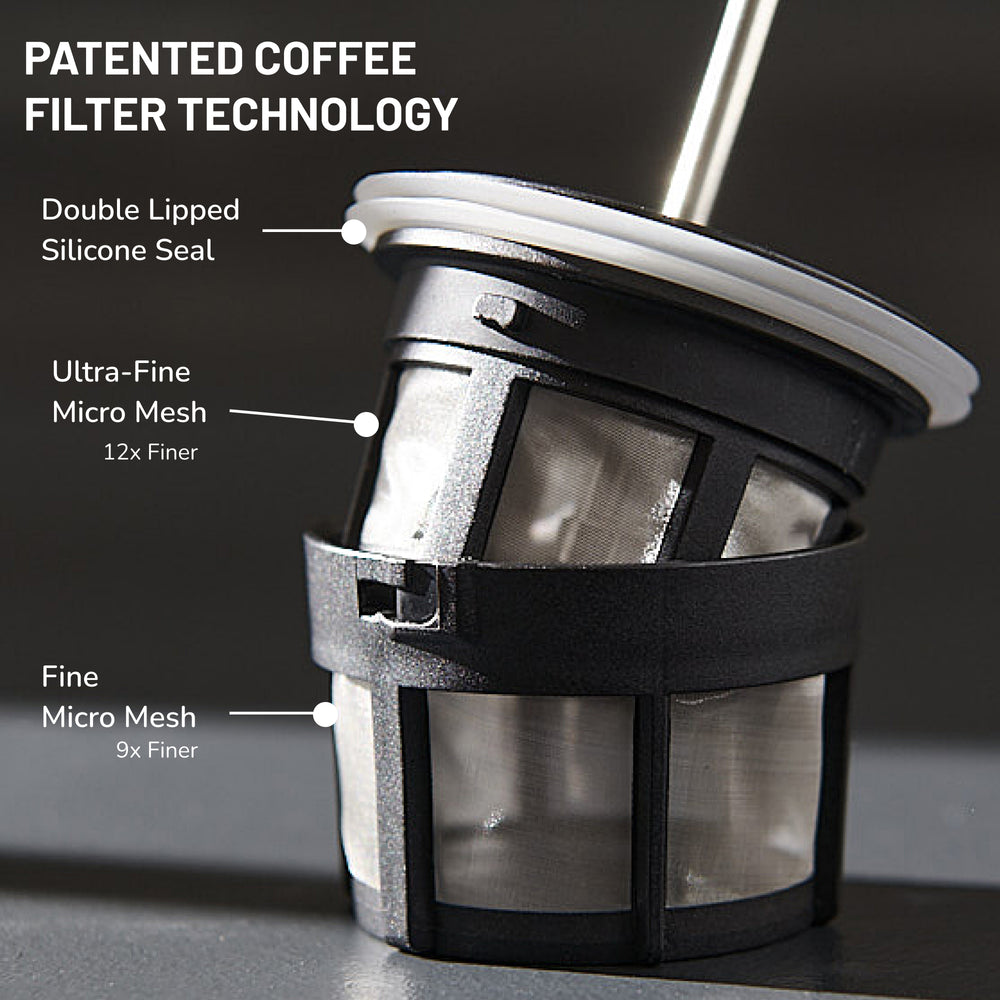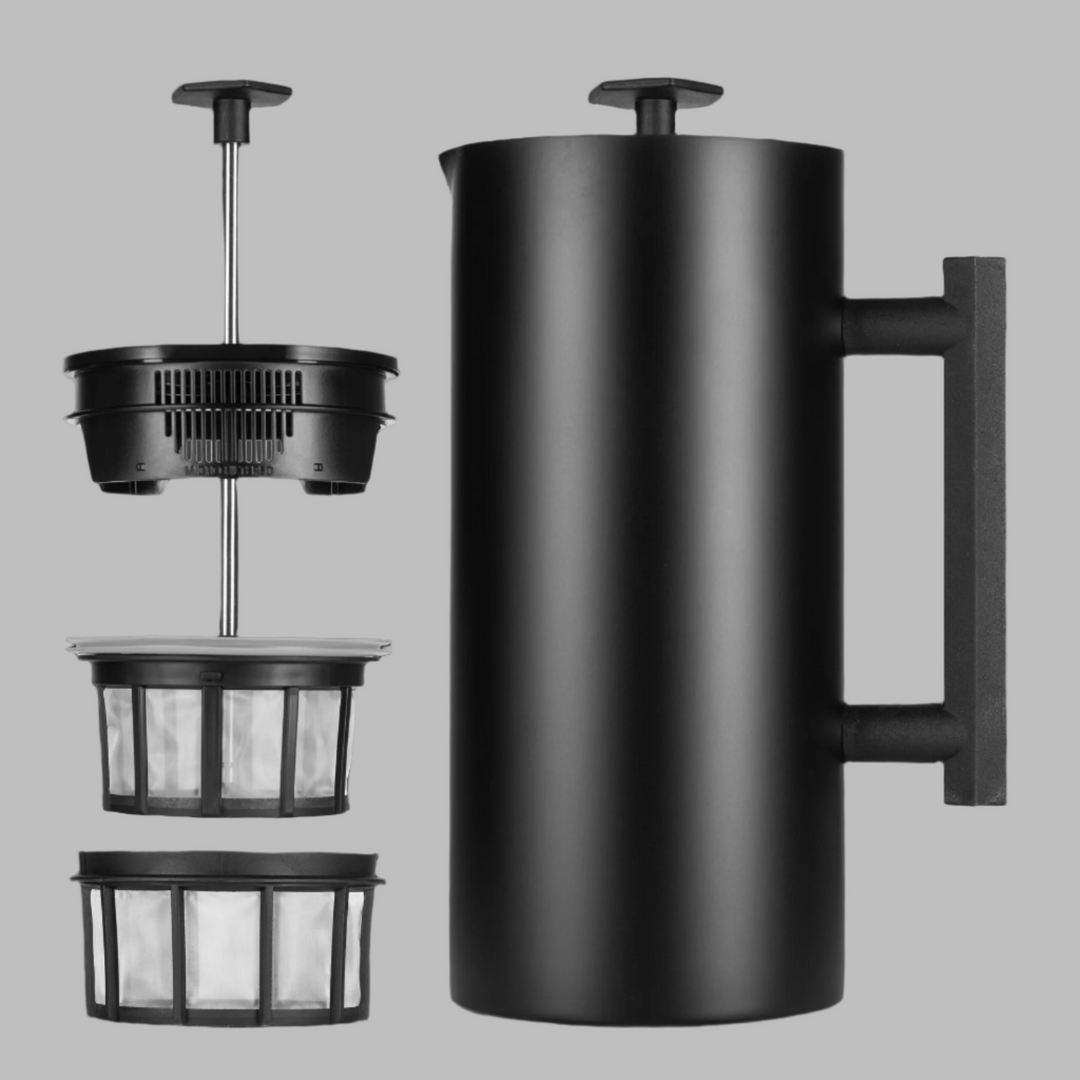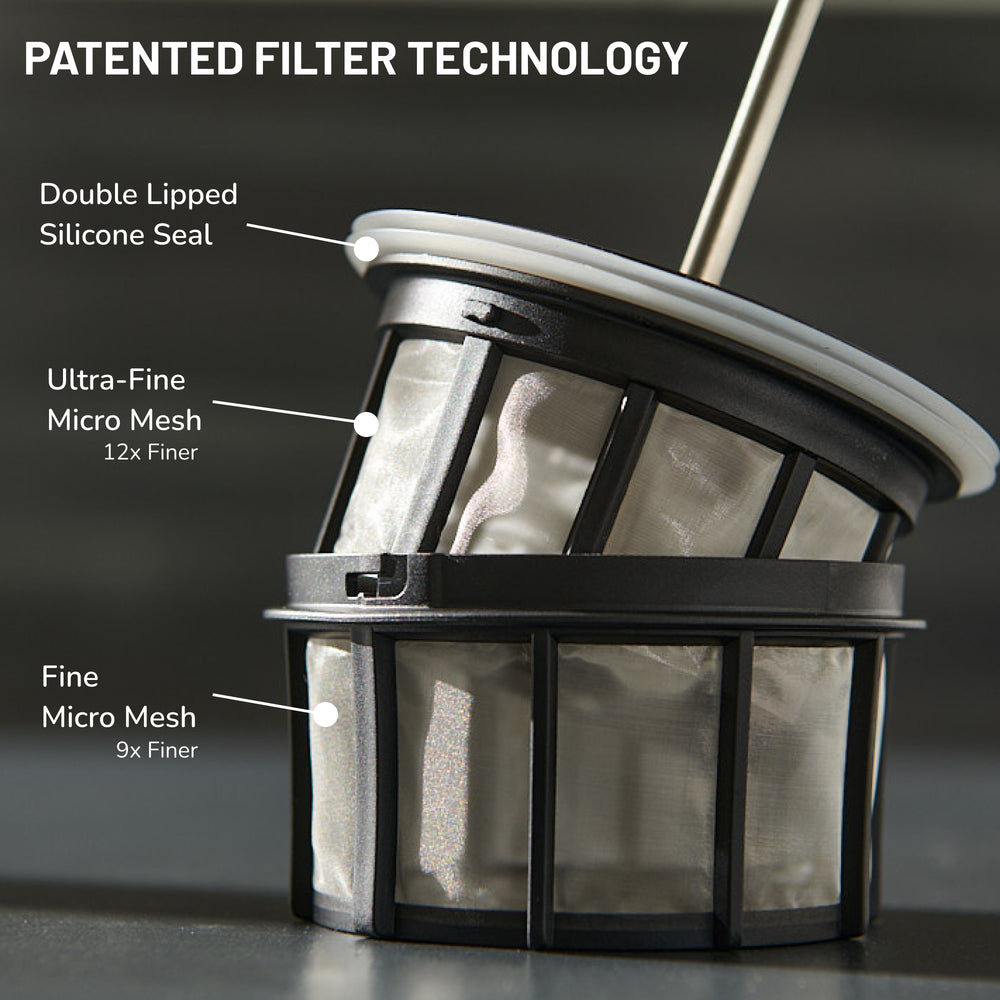The Perfect French Press Coffee Ratio: A Guide for Coffee Lovers
When it comes to coffee, it's all about finding the perfect ratio! In this guide, we’ll help you discover the perfect coffee-to-water ratio for a delicious cup every time. No more wasted coffee—just smooth, flavorful French press magic. Let's get brewing!
What is the Perfect French Press Coffee Ratio?
The magic of French press coffee lies in the perfect balance between coffee grounds and water. While there's a "golden ratio" to get you started, the key is experimenting and discovering what delights your taste buds most.
The Golden Ratio for French Press (1:15)
Most coffee experts recommend a 1:15 coffee-to-water ratio as a starting point. This translates to:

- Coffee: 1 gram of coffee (approximately 1 slightly rounded tablespoon)
- Coffee-to-Water Ratio for French Press: The common "golden ratio" is 1:15, meaning 1 gram of coffee for every 15 grams of water.
Adjusting for Your French Press:
- For a 32-ounce (946 ml) brew, you'd need approximately 63 grams of coffee (or 4 slightly rounded tablespoons) and 240 ml of water (approximately 1 cup).
- For a 48-ounce (1.4 liters) brew, you'd need approximately 94 grams of coffee (or 6 slightly rounded tablespoons) and 3 cups (720 ml) of water.
Remember: This is a starting point. Feel free to adjust the ratio based on your preferred coffee strength.
What is the Right Ratio for You?
The beauty of French press brewing lies in its customizability. Use the 1:15 ratio as your baseline and adjust based on your desired strength:
| Desired Strength | Coffee Grounds (grams) | Ratio |
|---|---|---|
| Strong | 16-17 | 1:13 to 1:12 |
| Standard | 15 | 1:15 |
| Weak | 13-14 | 1:17 to 1:16 |
- Stronger Coffee: Increase the coffee grounds by 1-2 grams per 15 ML of water.
- Weaker Coffee: Reduce the coffee grounds by 1-2 grams per 15 ML of water, or increase the water by the same amount.
Here's a handy table to visualize these adjustments:
Remember, these are just starting points! Feel free to experiment in smaller increments (0.5 grams) to find your perfect cup.
What Other Factors Affect Making Flavorful Coffee
The coffee-to-water ratio sets the stage, but for a truly exceptional cup, these additional factors come into play:
1. Grind Size

Using the right grind size is crucial for the French press. Unlike pour-over methods, the French press doesn't need a paper filter. Instead, the plunger separates the grounds from the brewed coffee. Here's why grind size matters:
- Coarse Grind is King: A coarse grind, similar to sea salt in texture, allows for optimal water flow and prevents bitterness. Fine grinds can seep through the plunger, creating a gritty texture and an overly bitter taste.
- Grinder Matters: If you don't have a grinder, pre-ground coffee labeled "French Press" should work, but freshly grinding your beans right before brewing unlocks the most flavor.
2. Freshness is the Key to Flavor

Just like any food, coffee beans lose their vibrancy over time. Here's how freshness impacts your French press:
- Freshly Roasted Beans: For the most robust and flavorful coffee, opt for beans roasted within the past two weeks.
- Storage Tips: Store your beans in an airtight container away from light and heat to preserve their freshness.
3. Water Temperature

Water temperature significantly impacts the extraction of coffee's flavor and aroma. Here's what to keep in mind:
- Just-off-the-Boil (90-96°C or 195-205°F): This is the ideal temperature range for French press brewing. Boiling water can scald the coffee, leading to a harsh taste.
- Cooling Method: If you don't have a gooseneck kettle for precise temperature control, simply let boiling water cool for about 30 seconds before pouring it over the grounds.
4. Brew Time
Steeping time plays a crucial role in developing the coffee's flavor profile. Here's a starting point and some tips for finding your perfect brew time:
- Brew Time Chart: This table offers a guideline for brew time based on desired coffee strength.
Brew Time Based on Desired Coffee Strength
| Desired Strength | Brew Time |
|---|---|
| Strong | 5-6 minutes |
| Standard | 4-5 minutes |
| Weak | 3-4 minutes |
- Experiment and Adjust: If your coffee tastes weak, try a slightly longer steep time (up to 6 minutes). For a stronger brew, shorten the steeping time (down to 3 minutes). Remember, over-extraction can lead to bitterness.
- The "Bloom": After adding hot water to the grounds, let it sit for 30 seconds to allow for CO2 release (blooming).
By mastering these elements alongside the perfect coffee-to-water ratio, you'll be well on your way to brewing French press coffee that rivals your favorite barista's creation.
What are Common Issues with French Press Coffee Ratios
Even with the right intentions, you might face some common issues related to the ratio. Let's address these and how to fix them.
- Bitter Coffee: Bitter coffee is often a sign of too much coffee about the water. If your ratio is too high (too many coffee grounds), it can lead to over-extraction and bitterness. Try reducing the amount of coffee or increasing the water to achieve a more balanced flavor.
- Weak or Watery Coffee: If your coffee tastes weak or watery, you might not be using enough coffee grounds for water. Ensure you use the right ratio, typically around 1:15 (one part coffee to fifteen parts water). Adjust by adding more coffee grounds if needed.
- Inconsistent Flavor: An inconsistent flavor can result from fluctuating ratios. Ensure you’re measuring your coffee and water accurately every time you brew. Using a kitchen scale can help maintain consistency in your ratio and, consequently, your coffee's flavor.
- Coffee Too Strong: If your coffee is consistently too strong, you might be using a too-low ratio (too few water for the amount of coffee). Adjust by adding more water or reducing the amount of coffee grounds to reach a more pleasant strength.
- Coffee Too Mild: If your coffee is too mild, you might need to increase the amount of coffee grounds relative to the water. A typical starting point is a 1:15 ratio, but you can experiment by slightly increasing the coffee amount to achieve a richer brew.
- Overpowering Acidity or Bitterness: If your coffee tastes overly acidic or bitter, your ratio could be off. This can happen with either too much coffee or too little water. Ensure you stick to the recommended ratios and adjust to balance the flavors.
- Difficulty in Adjusting Ratios: If you find it challenging to adjust the ratios to your liking, try small incremental changes. Adjusting by just a few grams of coffee or milliliters of water can make a significant difference. Keep notes on each change to find your perfect balance.
Remember, the perfect coffee-to-water ratio is a personal preference and may require some experimentation. Don’t be afraid to tweak and adjust until you find the ratio that suits your taste perfectly. Happy brewing!


